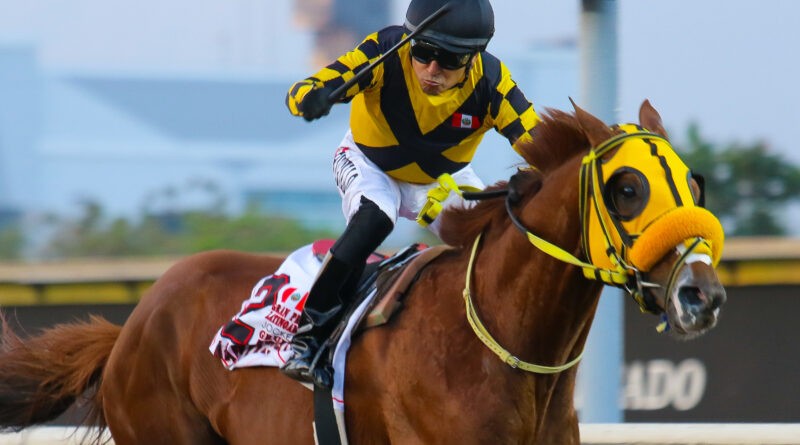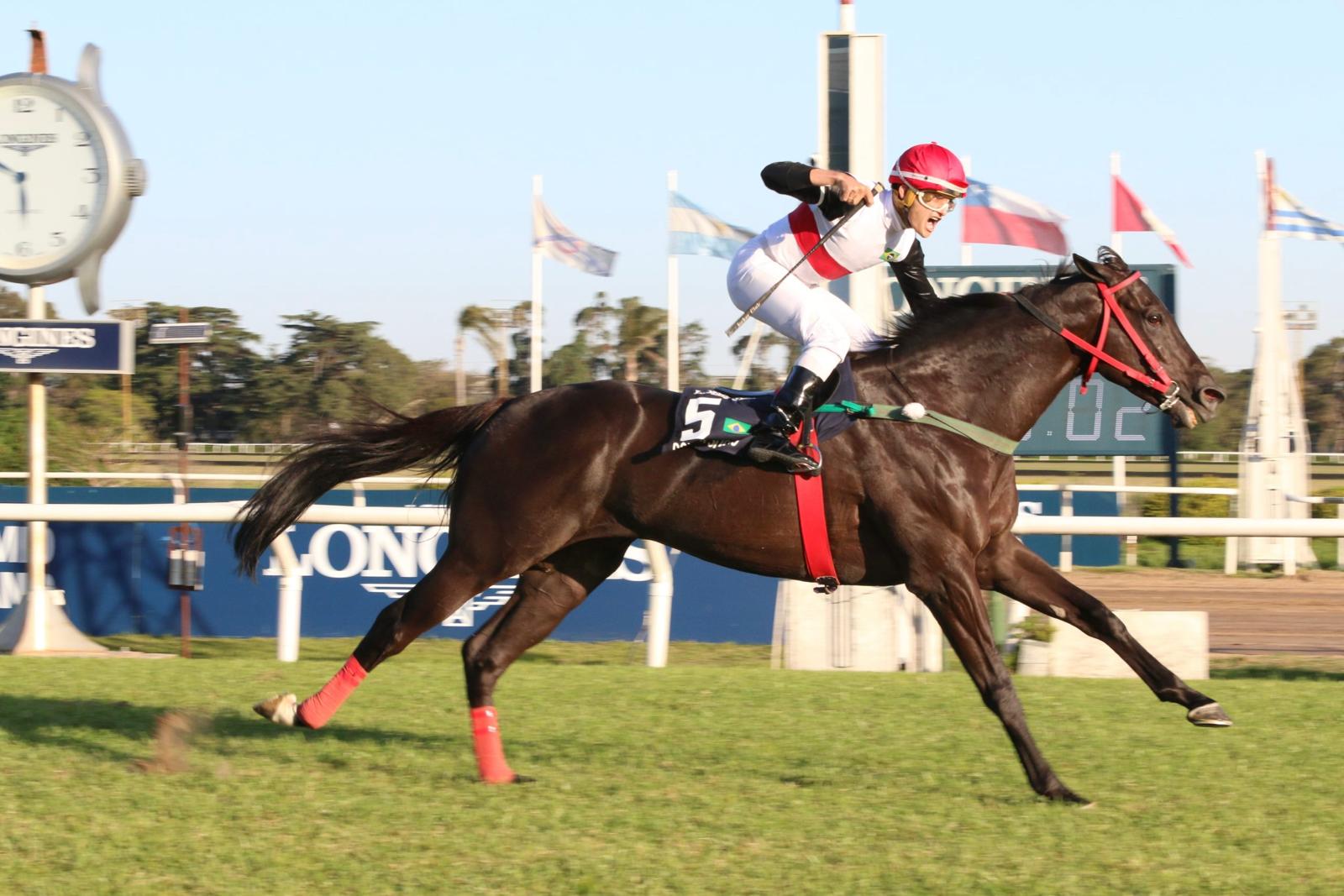Com um título de alerta (Can Horse Racing Survive?), a revista The New Yorker publicou uma reportagem, um texto extenso, como é seu costume, em que esquadrinha as corridas de cavalos nos EUA e no mundo.
Longe de ser sensacionalista, a matéria mostra que o turfe terá que, nos próximos anos, se reinventar perante a sociedade, sobretudo o público jovem.
Desafios: mostrar a beleza das corridas e dos cavalos, fazer dos hipódromos centros de lazer e entretenimento, combater fortemente o dopping e as mafias de jogo.
By William Finnegan
What happened at the Breeders' Cup World Championships in late 2019 looked like the end of horse racing in California, maybe in America. It was the twelfth and final race of a two-day series, at Santa Anita Park, the storied track near Los Angeles. Sixty-eight thousand people packed the Art Deco grandstand, the apron, the infield, the high-priced suites. The "handle"-the total betting for the day-was a healthy hundred and seventeen million dollars, but thoroughbred racing itself was on life support. Since the beginning of the year, thirty-five horses had died at Santa Anita. Public dismay had risen to the point that Gavin Newsom, California's governor, had told the Times that racing's "time is up" if it did not reform. Dianne Feinstein, the state's senior senator, had released a letter calling the Breeders' Cup races a "critical test for the future of horseracing."
Outside the track, animal-rights activists had been heckling racegoers under a banner that read "horseracing kills horses." They had a call-and-response going, street corner to street corner: "Horses don't want to be forced to run!" "Just like us!" "Horses feel pain!" "Just like us!" Heather Wilson, a nurse anesthetist, wore huge fake eyelashes and an absurd cocked hat. "I'm making fun of the women who think that killing horses is glamorous," she told me. "My hat is quasi-glam." She had been arrested at a previous protest at Santa Anita. "Right now, our focus is on California," she said. "Just get it on the ballot." She meant a statewide referendum, which she felt sure would result in a ban.
Santa Anita management and Breeders' Cup officials were desperate to have their event run smoothly. Their foremost concern, they told anyone who would listen, was the safety of their "equine athletes." They had flooded the zone with veterinarians and expensive imaging equipment, screening for preëxisting conditions. The animals were repeatedly tested for banned drugs. During morning workouts, vets used binoculars to study their gait on the track. Thoroughbreds, which can weigh twelve hundred pounds, have notoriously delicate ankles.
The Breeders' Cup Classic, which is a mile and a quarter and offers a six-million-dollar purse, came late in the day. The sun was sinking into the palm trees west of the stables as the horses, eleven of them, were loaded into the gate. Mongolian Groom, a dark-bay four-year-old gelding, had beaten the favorite, McKinzie, just a few weeks before, right here on this track. The handicappers didn't think he could do it again; he was a 12-1 shot. The whole group had raced together, in various combinations, at Saratoga and Churchill Downs, Belmont and Del Mar, in Pennsylvania and Louisiana. They were all campaigners, with maxed-out airline-loyalty accounts. Some seemed more enthusiastic than others.
One thing you could safely say about the horses was that they were thirsty. They had all been injected that morning with Lasix, a diuretic, noted on the racing form with a boldface "L." The given reason for Lasix is to prevent pulmonary bleeding, which hard running causes in many horses. The bleeding can be dangerous, and can certainly be unsightly, leaving horse and jockey painted with blood-not a good look these days. But only a small minority of thoroughbreds are serious bleeders, and for decades nearly every thoroughbred in the U.S. has received race-day Lasix. The drug's diuretic function causes horses to unload epic amounts of urine-twenty or thirty pounds' worth. The advantage of running light is obvious, as is the reason that critics consider Lasix a performance-enhancing med. Race-day Lasix is banned in Europe, Asia, and Australia.
The activists outside, suggesting that horses don't like to race, were half right. Running fast comes naturally to thoroughbreds, but racers need to be trained to outrun opponents. Most, it is thought, need "encouragement"-whipping-to continue going hard when they're tired. Racehorses, especially those running on oval tracks, give their lower legs a terrible pounding, straining ligaments, tendons, joints. Mongolian Groom's lower hind legs were wrapped in blue bandages, which is not uncommon; horses tend to kick themselves. He wore a heavy blue hood, to keep him concentrated on what's in front of him, and a shadow roll across his nose. Horses can startle at shadows on the ground, and the roll reduces the number they see.
At the starting gate, Mongolian Groom balked. Horses who balk-are they frightened, angry? Bettors like to look at a horse's coat in the walking ring before a race. If it's bright, rippling with just the right amount of sweat and muscled excitement, the beast is believed to be ready to run. Was Mongolian Groom's coat bright? It looked bright enough. His rider, Abel Cedillo, a journeyman from Guatemala, was patient, the gate staff slightly less so. The horse's owner was there that day: Ganbaatar Dagvadorj, a Mongolian tycoon who made his first fortune in post-Communist supermarkets. He and his friends wore traditional robes, big leather belts, and velvet caps that came to a shiny point.
The eleven horses finally settled, and broke cleanly from the gate. The track was dirt, rather deep and slow. War of Will, that year's Preakness champion, took an early lead and held it around the clubhouse turn. Mongolian Groom was just off the pace, with McKinzie, a small-framed bay, a nose behind him. Horses are prey animals, who instinctively prefer the safety of the middle of the pack. But being in the middle of this pack would have been miserable-dirt getting kicked in your face, nothing to see but horse butts.
In the backstretch, the pack started running into the last of the sun. From the shadowed grandstand, horses and riders were drenched in pinkish light, moving with huge strides and hypnotic smoothness. War of Will had the inside position, hugging the rail, but on the far turn you could see that he was tiring, despite his jockey's whip. McKinzie and Mongolian Groom surged past, with McKinzie a half length ahead. Then, at the top of the stretch, Vino Rosso, a big chestnut colt, made a powerful move on the outside. Sixty-eight thousand humans switched from cheering to shrieking. (Betting on a horse is a known intoxicant. Also a stimulant.) The Classic turned into a two-horse race, Vino Rosso and McKinzie, and mass hysteria seemed to crackle the air. Vino Rosso pulled away and won by four lengths.
I was on my feet in the press box, along with dozens of other reporters. But I noticed a turf writer next to me, peering through binoculars at the top of the stretch. There was a commotion on the track-workers throwing up a green tarp wall, a van, a pickup, a bigger van. It took me a moment to realize that a horse was missing. Mongolian Groom had disappeared from the race, pulled up by his jockey, Cedillo. The bigger van was an equine ambulance.
The show went on, with television lights illuminating a scene of jubilation: flower wreaths, a shining horse, exultant connections. The liquored-up crowd partied on. The turf writers hustled down to get a quote from the owners, Vinnie Viola and Mike Repole, who were incoherent with joy. But the news, it seemed to me, because I'm not a beat reporter, was back on the track, in the gathering dusk.
Mongolian Groom, we eventually learned, had broken his left hind leg. A small stress fracture had propagated upward, splitting a ligament and smaller bones and shattering the cannon bone and the fetlock joint, damaging soft tissue and blood supply. That is a fatal injury. The vets who euthanized him could have fought a hopeless battle for a few days, with the horse in agony, if they had wanted to postpone this announcement for publicity reasons. That wasn't what they did.
The day that Mongolian Groom died, Nick Alexander had a horse at Santa Anita, too. His filly Just Grazed Me, the reigning star in his stable, won the day's first race: the Senator Ken Maddy Stakes, named for a politician from Fresno who supported racing.
Alexander grew up down the street, in Pasadena, and he knew the track in its heyday, in the fifties. "When I was growing up, horse racing was pretty much the only game in town," he said. "No Dodgers, no Lakers, just the Rams. But I was already a Dodgers fan, because of Jackie Robinson. We were both from Pasadena." Alexander, who is seventy-eight, lanky, and blue-eyed, with a sun-blistered nose and a white soul patch, names horses for old-time Dodgers: Johnny Podres, Pee Wee Reese. "First bet I placed here, when I was ten or eleven-two dollars on Gold Man," he told me. "Won twenty dollars. I'll never forget it." As a teen-ager, he landed a job as a "get-ready boy" at a car lot. He later had his own dealership, which he advertised on the radio with the slogan "Nick can't say no!" Old locals still greet him with that one. "KNX, everybody listened to it. Santa Anita used to advertise on there. They'd broadcast the stretch call, from the eighth pole. Really exciting-you could hear the crowd. I say we should do that again."
Thoroughbred racing, once the most popular spectator sport in America, has been in decline since Alexander started on the car lot. Attendance at Santa Anita was bad even before covid-19. The graceful old track, now eighty-six, is smartly maintained, with striking semitropical gardens and life-size statues of Seabiscuit and Zenyatta. But only a handful of the old teller windows, which run for city blocks under the grandstand, are open on an ordinary racing day. In a dank, shadowy men's room, I found the longest unbroken rank of urinals I'd ever seen, without a single shuffling patron. Away from the private suites and the reserved seating upstairs, the crowd is mostly working-class men, who periodically gather to stare up at banks of TVs in the bowels of the grandstand, even as beautiful horses gallop just outside in the sunshine. The TVs broadcast races from all over the country, even from Peru and Argentina, so it's hard to tell who has bet on what. But the curses, many in Spanish and Chinese, that rise with the stretch runs and occasionally end with a triumphant hoot have the rhythm and ring of universal imprecations.
When Alexander was a kid, horse racing enjoyed a monopoly on legal gambling in nearly every part of America outside Las Vegas. Then, in 1978, the first casino opened in Atlantic City. More than a thousand casinos have opened since, many of them on Native American reservation land. State lotteries also boomed, siphoning off more of the gambler's dollar. In the past two decades, the over-all national betting handle at racetracks has fallen by nearly fifty per cent. Dozens of tracks have closed. Racing is still a fifteen-billion-dollar industry, but the number of races and the size of the thoroughbred-foal crop are less than half what they were in 1990.
Some racetracks adapted by building casinos on their grounds-racinos-and many went to state legislatures for help. Racing commissions and legislatures were often old friends, and in many states a percentage of casino profits was directed to the tracks and the horse-breeding industry. Things went differently in California. Native American tribes have built sixty-nine casinos there, and the gaming lobby is often described as the state's most powerful. Horse-racing subsidies did not come to pass. Racing has little cachet left in California. It's been aeons since Bing Crosby and Spencer Tracy were track regulars and horse owners. Even Alex Trebek has left the building.
The terrible parade of dead horses at Santa Anita in 2019 drove the sport into an identity crisis, and not just in California. I heard it when I talked to horse people in Florida, Maryland, New York, and especially bluegrass Kentucky, the industry's headquarters: the defensiveness, the virtue signalling, the pleas for understanding-but we love our horses. The opponents of racing seemed increasingly confident that it would soon go the way of circus elephants, dolphin shows, dog racing, all the discredited animal entertainments.
What went wrong at Santa Anita? The abolitionists liked to say it was just business as usual-horse torture and murder. The apologists said it was business as usual, too-racehorses have always died, even before bleeding-heart outsiders started paying attention. But it wasn't business as usual. Horses were dying every single week. They were dying during workouts, during races, on turf and on dirt. Colts, fillies, geldings. Obscure claimers, first-time runners, a famous stakes winner during a workout. The deaths started to make the Los Angeles Times, and social media picked up the scent. More protesters appeared at the track. People for the Ethical Treatment of Animals demanded that Newsom shut down Santa Anita. "Something is drastically wrong," Art Sherman, a trainer in his eighties, told the Times. "I've been around a long time and have never seen this."
In March, 2019, when the season's death count hit twenty-one, the track's owner, a Canadian conglomerate called the Stronach Group, halted racing for three weeks. The president, Belinda Stronach, released a public letter, "about the Future of Thoroughbred Racing in California." The letter focussed almost entirely on drugs. "The Stronach Group will take the unprecedented step of declaring a zero tolerance for race day medication," she wrote. Lasix and other meds, including anabolic steroids, would be banned at Santa Anita. This was a "paradigm shift"-never mind that anabolic steroids had been effectively banned a long time ago. The letter also addressed "the growing concern about use of the riding crop" and included an encomium from peta, thanking Stronach for "standing up to all those who have used any means to force injured or unfit horses to run." That meant trainers and owners, presumably, not her own executives.
Nick Alexander didn't believe that the problem was Lasix, but he thought Stronach's intervention was brilliant, in a way. "She didn't know Lasix from a piece of gravel," he told me, in early 2020. "But she shifted the focus away from the bad racetrack and onto the trainers who were sending out their horses. She changed the narrative, and it worked." The first twenty-three horses who had died during the crisis of 2019 were undergoing necropsies at the University of California, Davis. The results had not yet been released, but Alexander said that he'd be surprised if they indicated any banned substances or excessive levels of permitted meds. A few weeks later, the results came out, and they showed no traces of anything chemically amiss.
Even if Lasix had nothing to do with catastrophic breakdowns, it represented, to many people, the abuses of American racing. Jeff Blea, a respected racetrack veterinarian who was a jockey until a bad spill forced a career change, believes that some horses need Lasix. "But the public doesn't want horses medicated on race day," he said. "So . . . we've got to maintain our social license to operate." I thought that racing's social license was probably already revoked, but this was one of the ambient ironies of its twilight predicament: the outrage about horse welfare was causing horse experts to think harder about public perception, even at the expense of horse welfare. Rick Arthur, another prominent veterinarian, said, "The fate of racing will be decided by people who've never been to the races, know nothing about horses, have probably never even touched a racehorse."
"I'm the manure shoveller," Nick Alexander says.
This article has been updated to match the version that ran in print.
The New Yorker
https://www.newyorker.com/magazine/2021/05/24/can-horse-racing-survive





